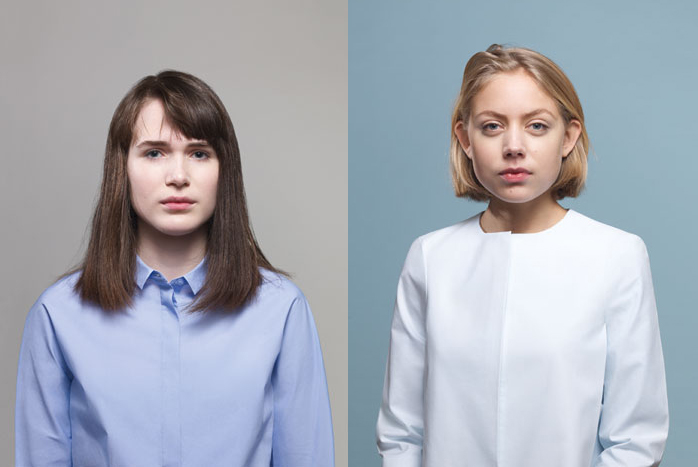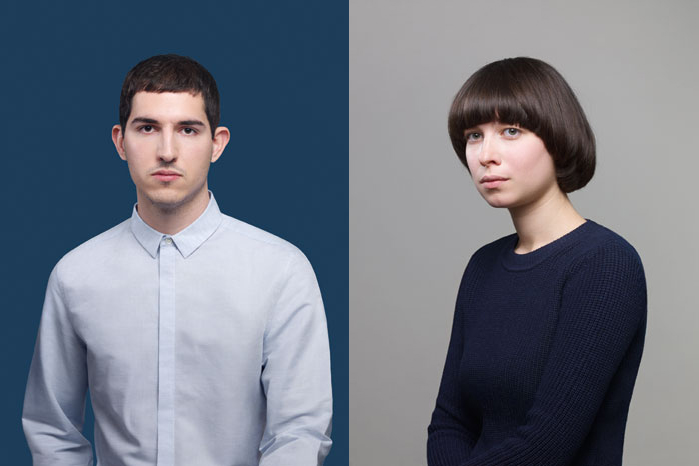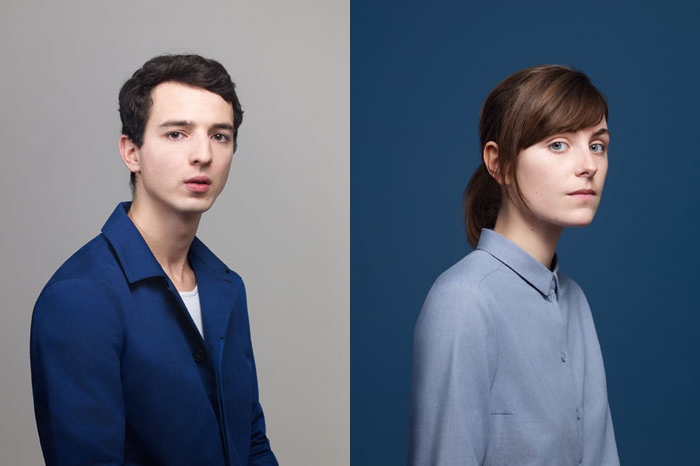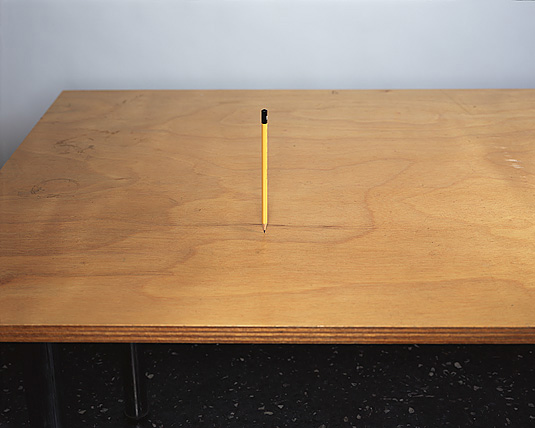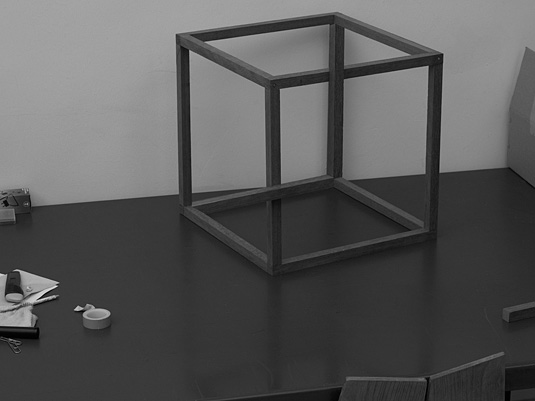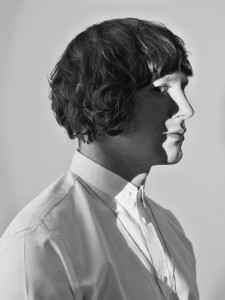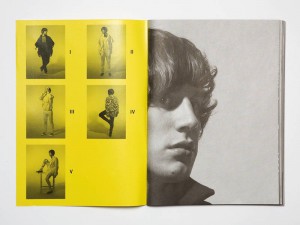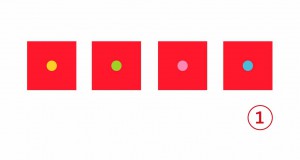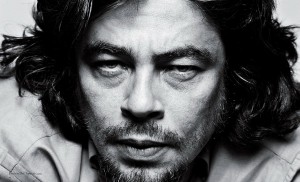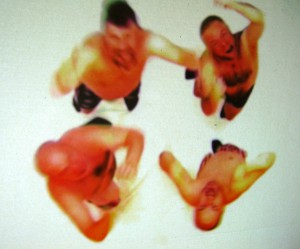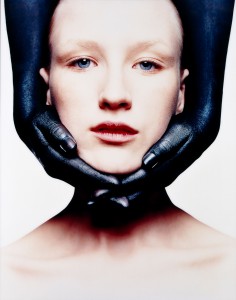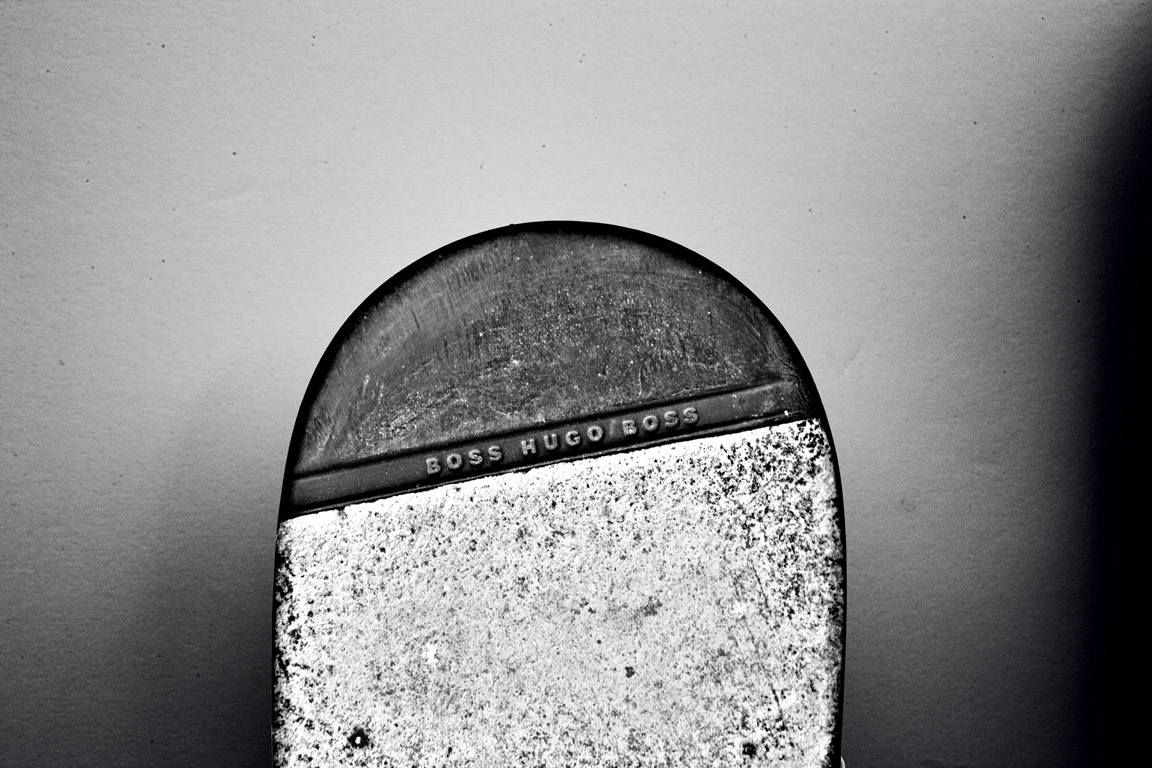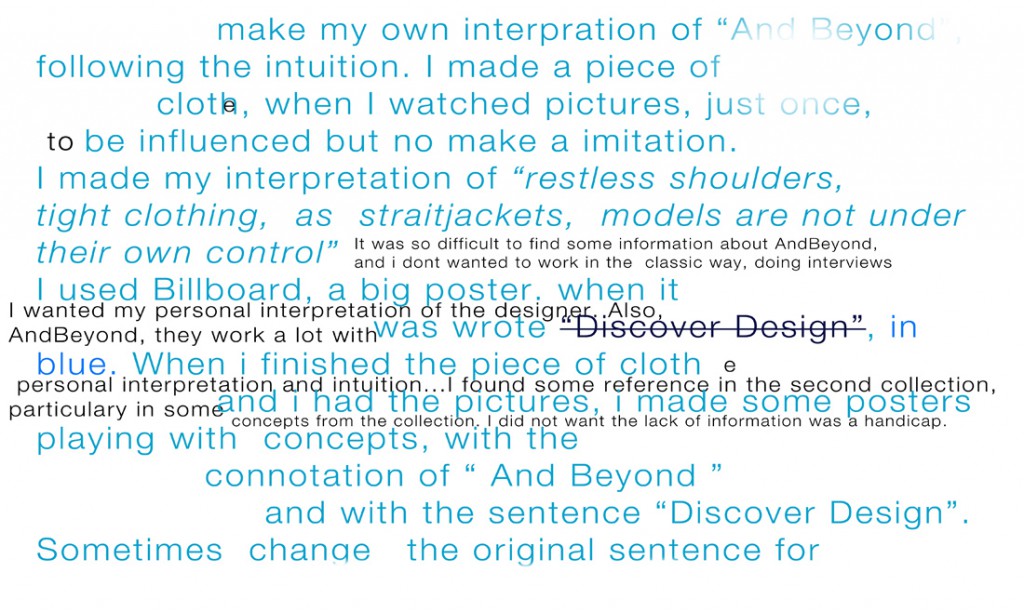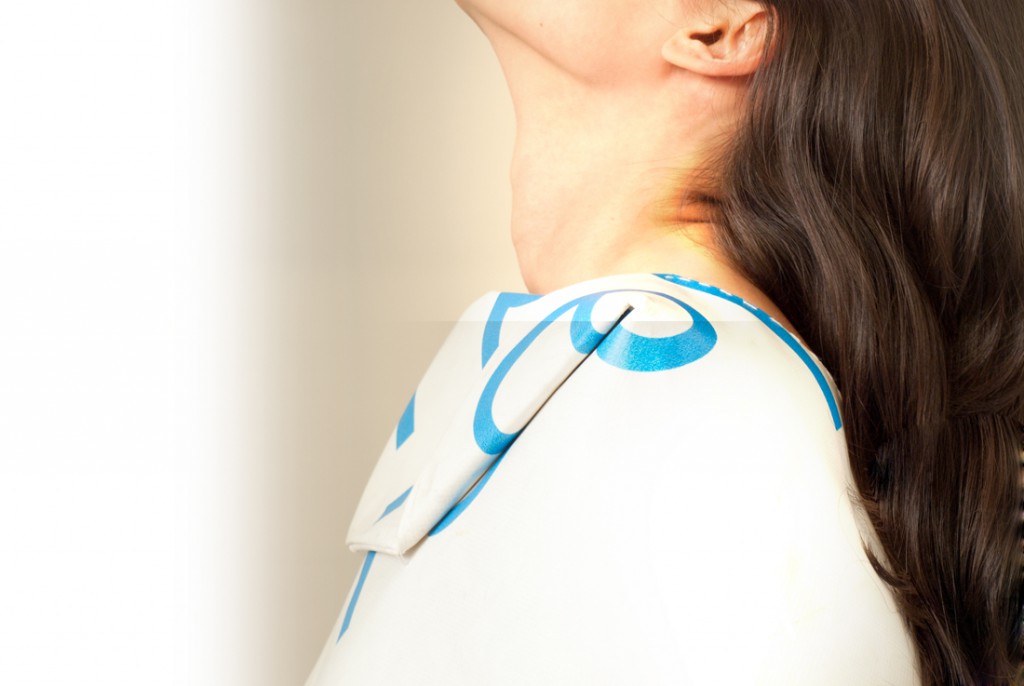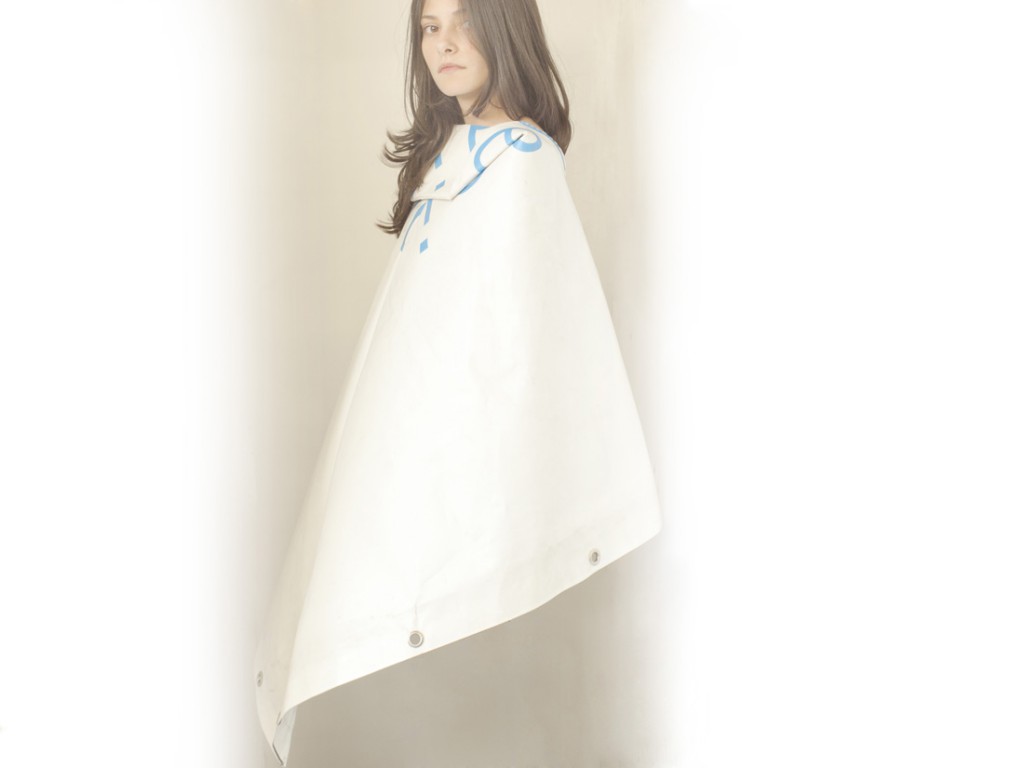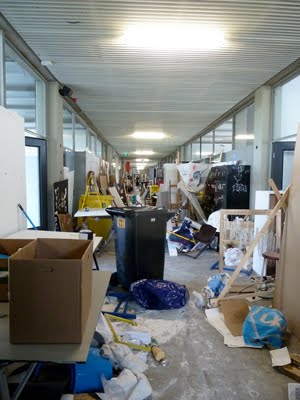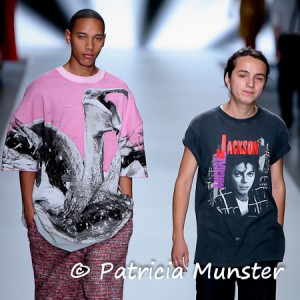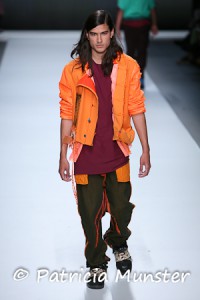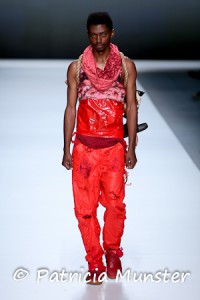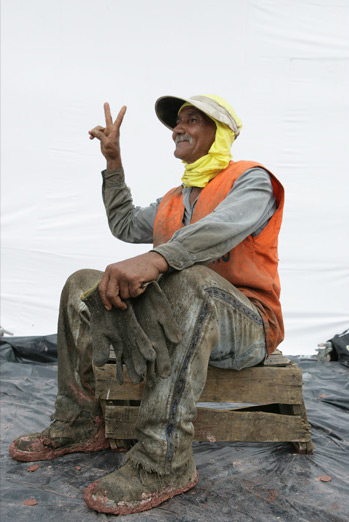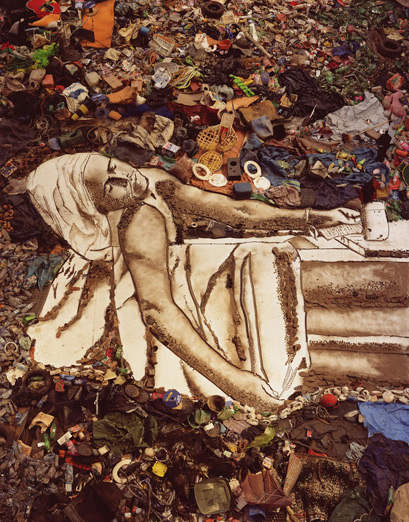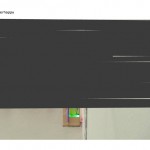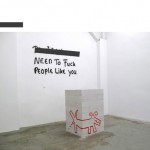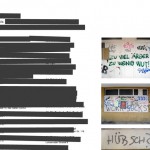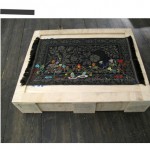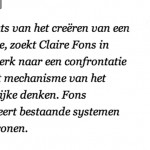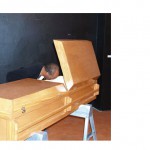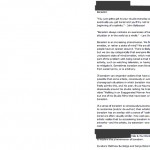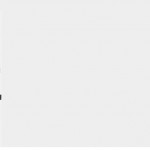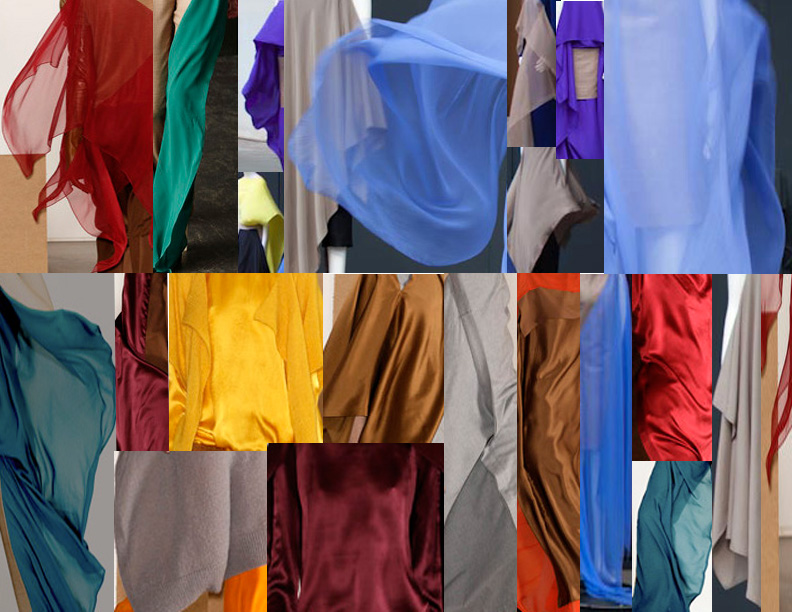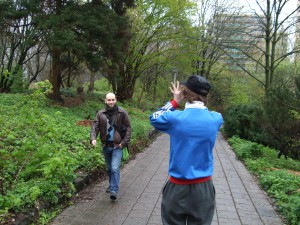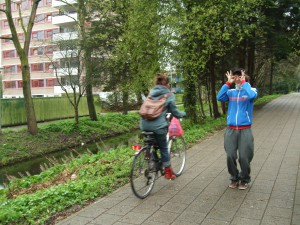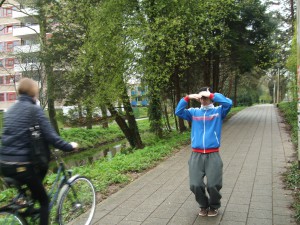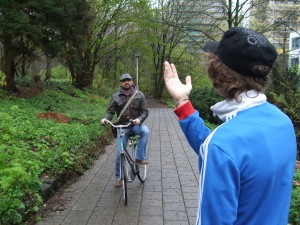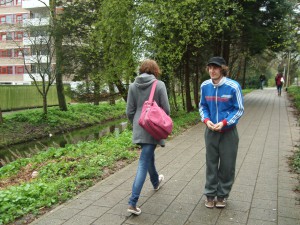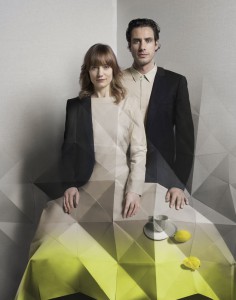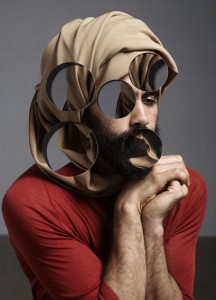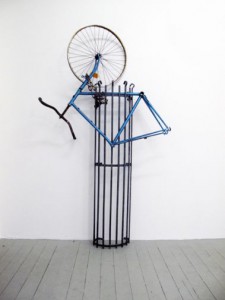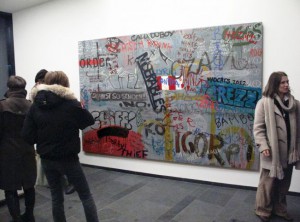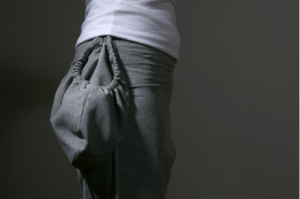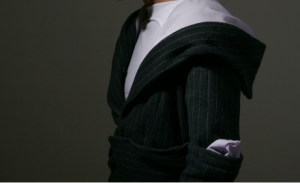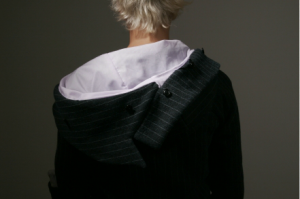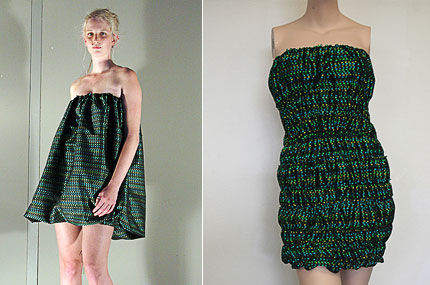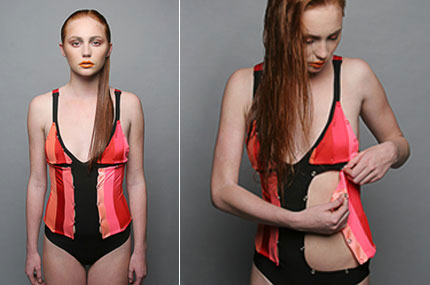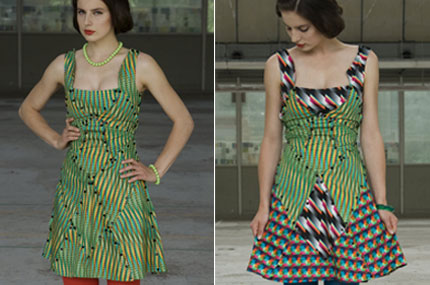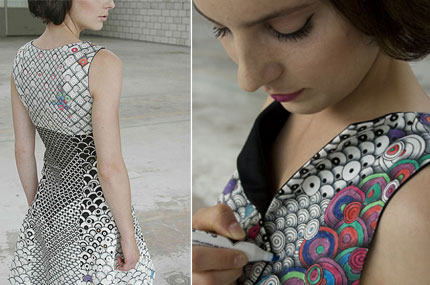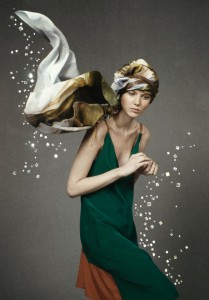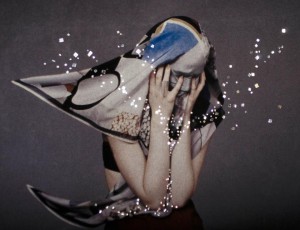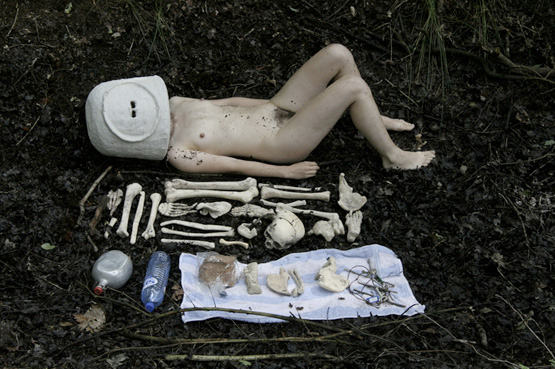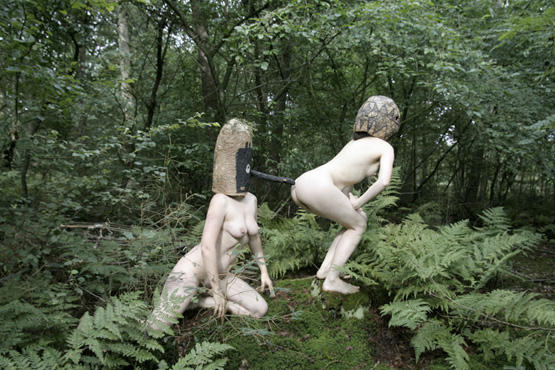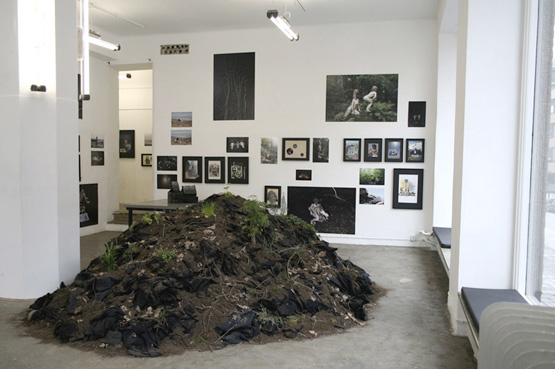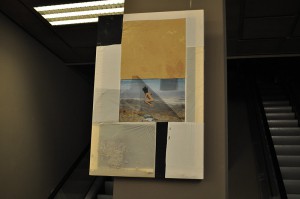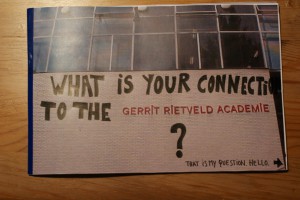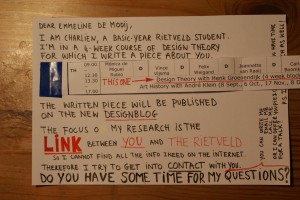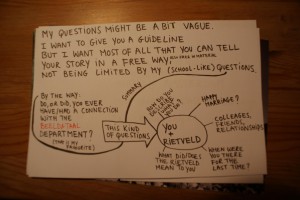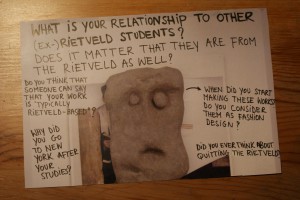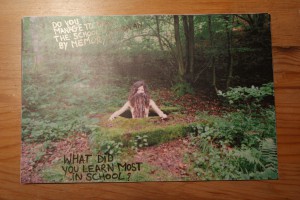We didn’t ask the school, we sent Linda (Linda Van Deursen, head of graphic design department, red.) a mail to say what we needed, but yeah after that I don’t think we had any contact with the school again.” Niels smiles.
I’m sitting in the studio of two of the leading fashion photographers in the world, that of Auschka Blommers and Niels Schumm, sipping a coffee that Anuschka made for me.
“Well, it was our idea to use Rietveld students”, Niels explains when I ask them who decided to make the reportage, “It was the Art Director who wanted a street casting and COS was very sceptical to it at first. But it’s always a bit tricky to go out on the streets to find models; they are always staying only for a few days in the country or can’t make it for some other reason. So it was easier for us to pick students from Rietveld. Besides it felt more like a real group, closer to us somehow. We all knew about each other, so that makes it easier to work together.”
What we are talking about is the latest collaboration Anuschka and Niels had with COS, a smaller brand originally an offspring from H&M, with their new lookbook for 2012.
So they started with a casting, asking and selecting fifteen people from the school, of which ten pictures were chosen to be viewed by COS, who then picked out seven of them to be in the magazine.
“But yeah, they see something else than we do” Anuschka explains, “where we see portraits, they see too much blonds. Or too pail skin. Or not enough guys, and so forth.”
I find it interesting that Anuschka and Niels, being former students and employees at the Rietveld, are doing a lookbook for a commercial fashion brand where they make use of Rietveld students without consulting the academy. In this way, Rietveld is portrayed almost as a product, rather than an art school.
But let’s go back a bit. It all started 1996, the year Anuschka Blommers had her end exam show at the Rietveld Academy (Niels graduated a year before). There she met Job van Bennekom, he saw her work and was immediately impressed and wanted her and Niels to come and make a photo series for a new magazine he was working on.
“YOUR work? He saw your work? Here we go again!” Says Niels laughing.
“Ok, our work then”, Anuschka replies smiling. She heard that joke before.
“We’re like a married couple, fighting over little things”, he explains, “not knowing who did what or said what anymore.”
Anuschka and Niels were working more and more together until one day they couldn’t tell who made which pictures anymore.
“It’s ridiculous really, we got to that point were I would help Anuschka set up the light in the studio, and she would hold the camera and take a shot. So which name should it be under the picture? Foto: Anuschka Blommers, Light: Niels Schumm? That didn’t work.”
“So we started to work together as a duo and eventually you forget who did what. You start to believe that you did a lot more than you actually did!” Anuschka fills in.
They are very used to each other, one picks up were the other one is finishing a sentence and they easily slipp into jokes and laughter.
“So anyway, it was Jop who one year later introduced us to Viktor & Rolf for an exhibition some 15 years ago”, Anuschka says.
And that’s where it all started for Anuschka and Niels, they took their first step into the fashion industry and haven’t stepped out of there since then.
“I mean, we were basically doing what we did at the Rietveld, taking pictures of our family and friends, but the only difference now is that they wear big brands like Comme Des Garcons.”
“Then why did you want to do fashion photography?”
“Well we didn’t!” they both respond.
“We didn’t know anything about fashion or clothes or brands. We really had no clue! We just kept doing our thing, but we did it with the models wearing their fashion couture instead.” Niels says.
“We have some influence while taking the picture and printing it in a magazine, but what I find fascinating is that media then picks it up and it can go anywhere, it gets its own life. We don’t know what’s going to happen”, Anuschka explains.
“For instance last year at Queen’s Day, I actually met a woman who sold me one of my first pictures back to me, without knowing! She kept it for 15 years! That is amazing”, Niels says.
But Anuschka and Niels don’t just do portraits and fashion, they have also done work with still life photography, something that Niels was doing a lot in his Rietveld days, whereas Anuschka mostly did portraits back then. When asked what they prefer to do now they tell me that it’s the opposite: when they work separately on private projects Anuschka is the one trying out still life, whereas Niels is doing more portraits.
In their collaborate work they are trying to step away from Photoshop by taking surreal photos of objects floating, or tricking the eye, by only using lights and angles. For instants The Cube was one of the first photos that Niels wanted to make. He got a camera at the age of ten, and it fascinated him then how the perspective changes when you look through the viewfinder, so when you take the picture it never is quite the same as you saw it in reality. This notion he carried with him, he wanted to challenge this illusion by taking a picture with a professional camera, arranging this impossible cube.
“There was actually a young couple at our last exhibition at Foam, where the girl asked the boy; How do they do that?, and the boy answers; Photoshop, of course! We both were like Noooooo!” Anuschka laughs.
It is fascinating to see how they try to make a real thing look like something that’s not real, like this impossible cube that looks like a cube from one angle and from another angle it’s just pieces of wood. So it’s very much about that, about this non-Photoshop. With little gestures they want to turn around the meaning of the image.
“You should always go back to yourself, and stay true to what you do”, Anuschka says in the end of the interview, smiling vaguely as if she’s possessing a secret that she knows already, and that we all have to discover for ourselves.
